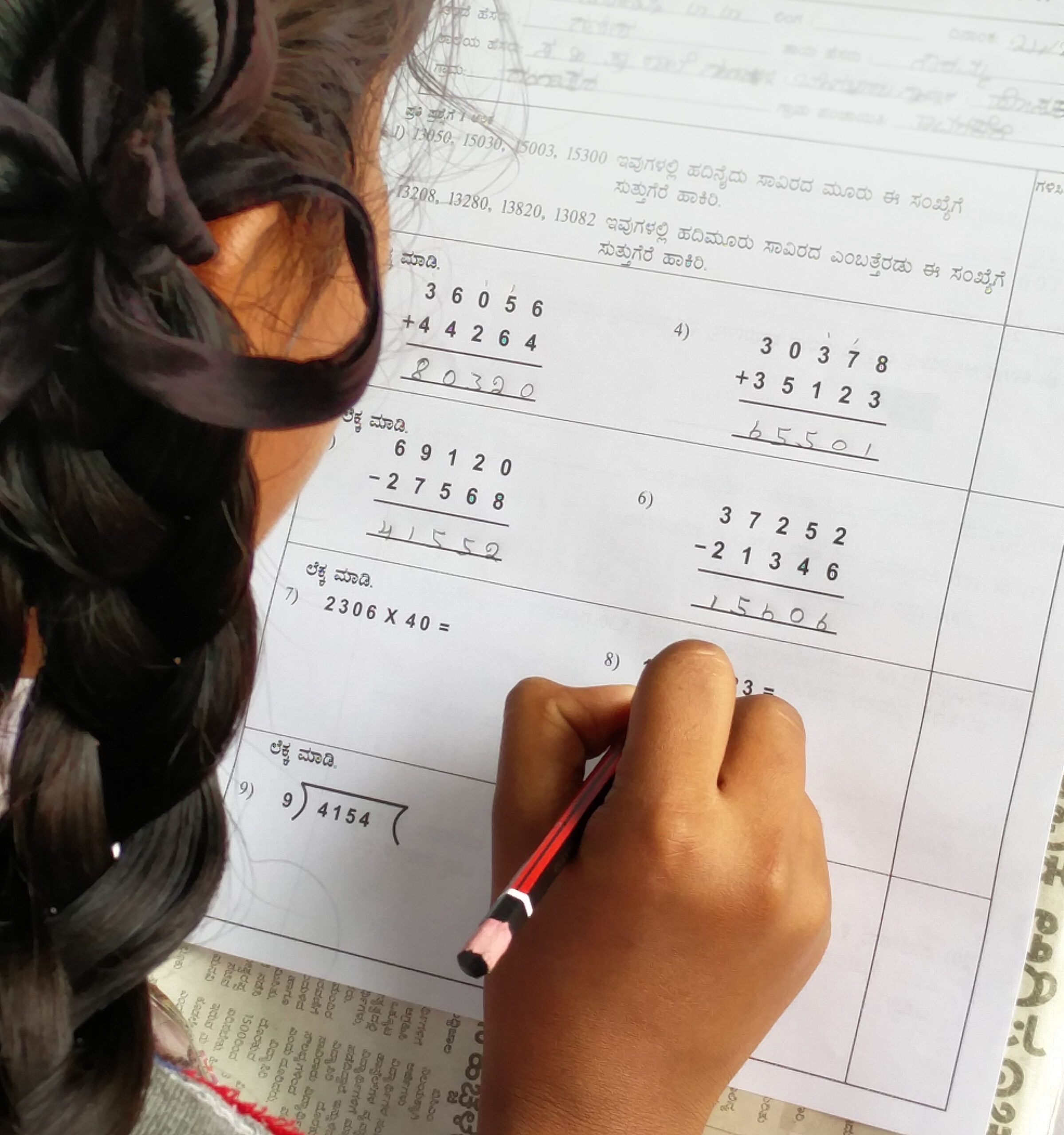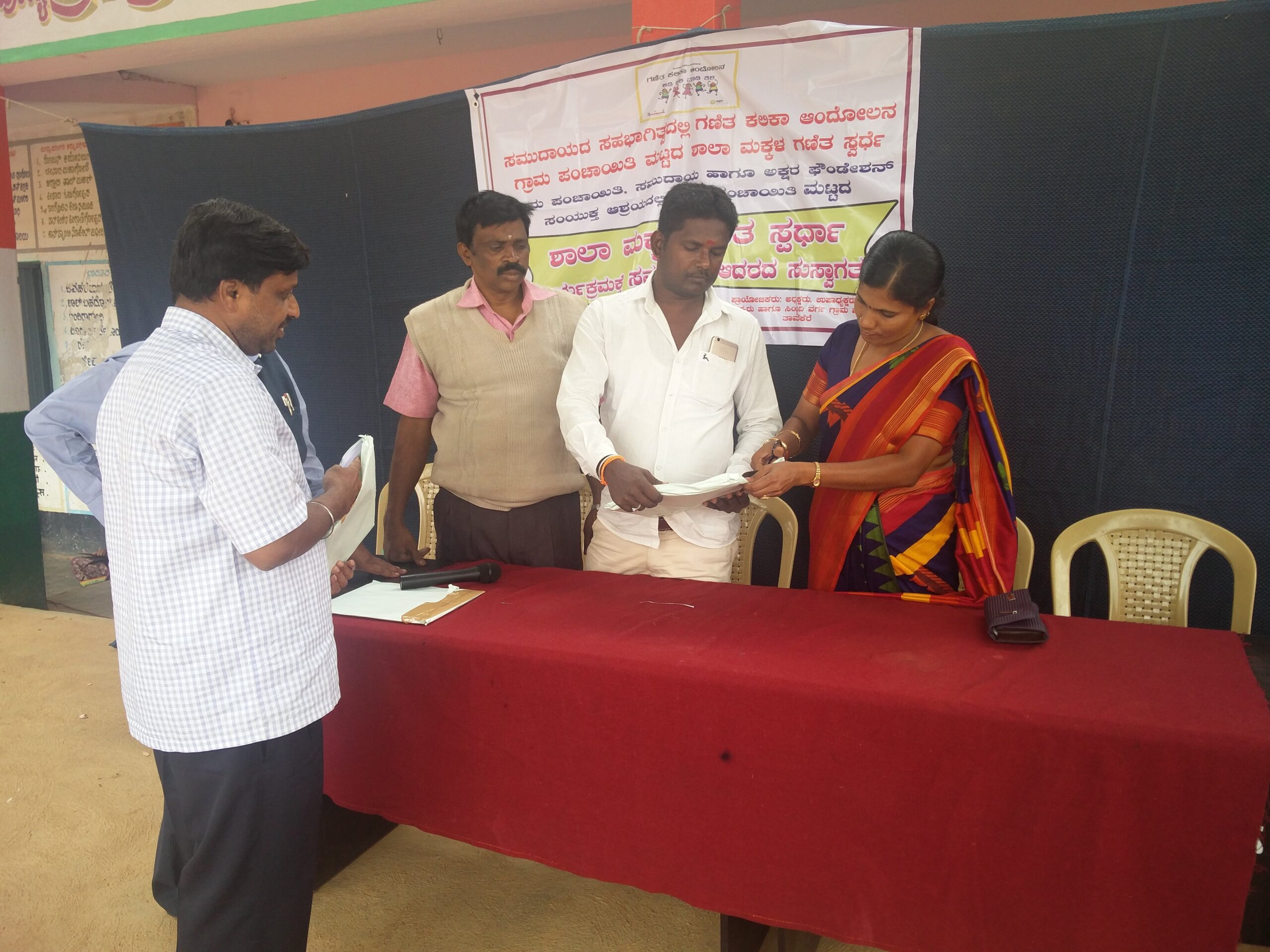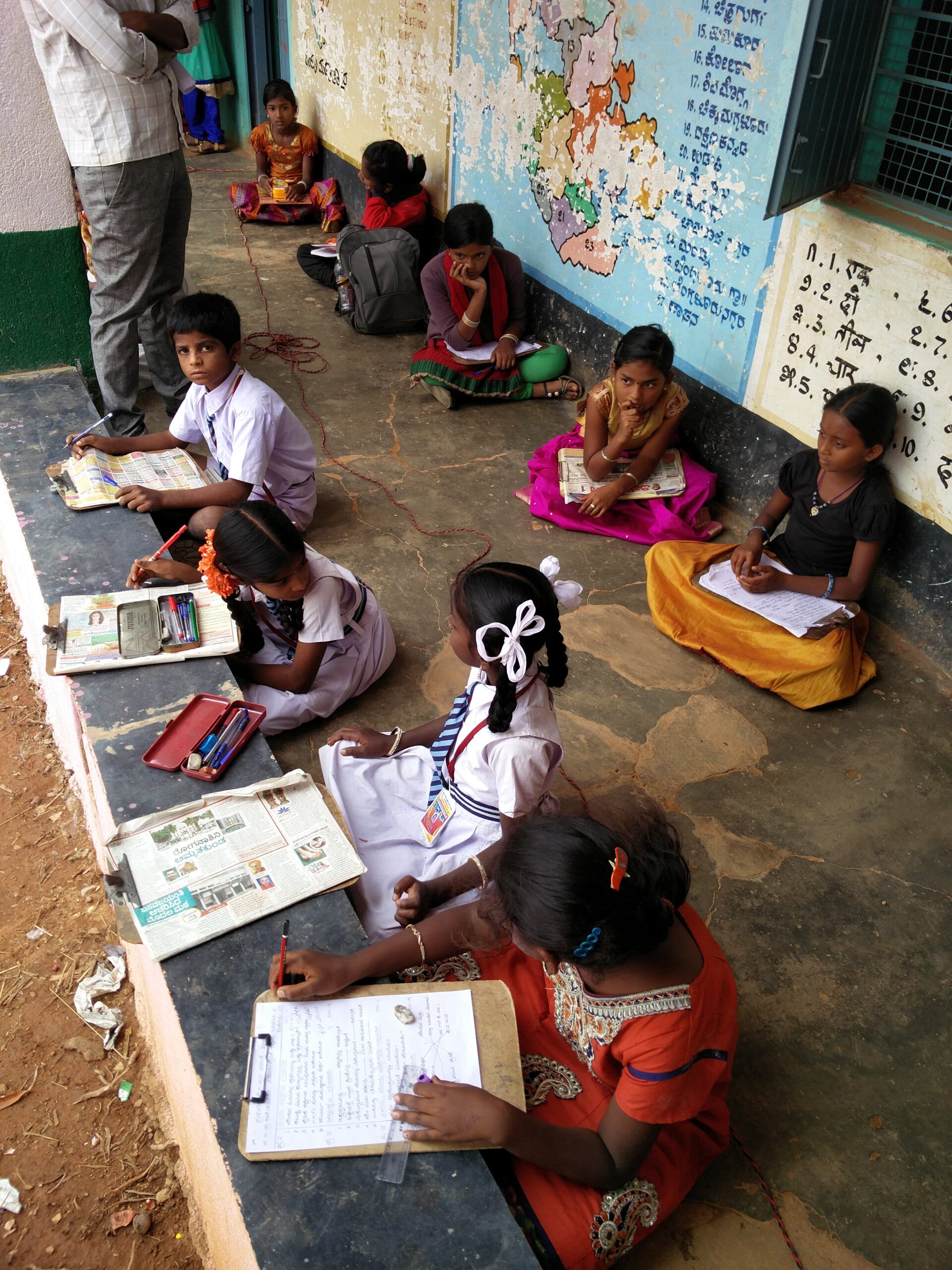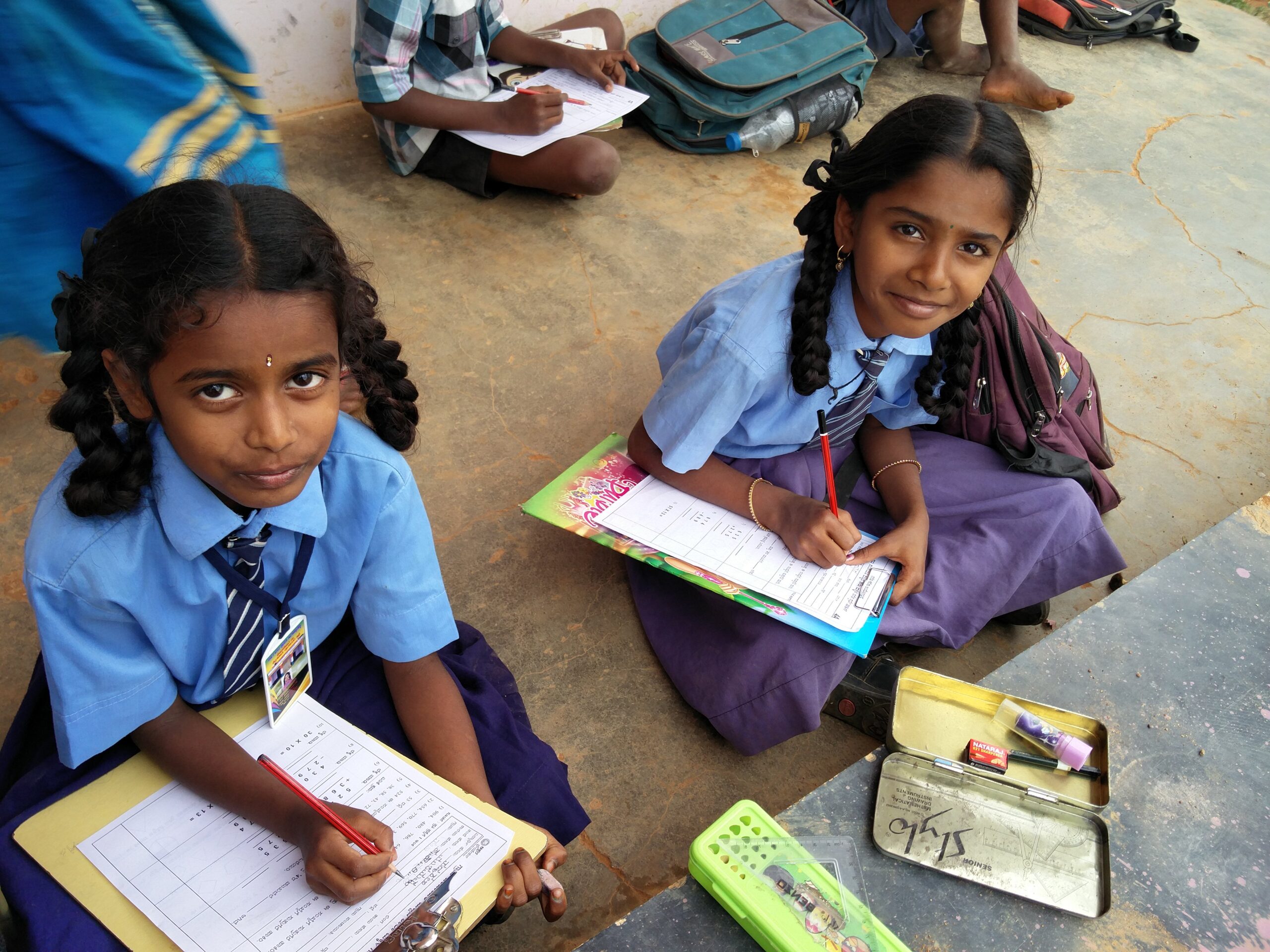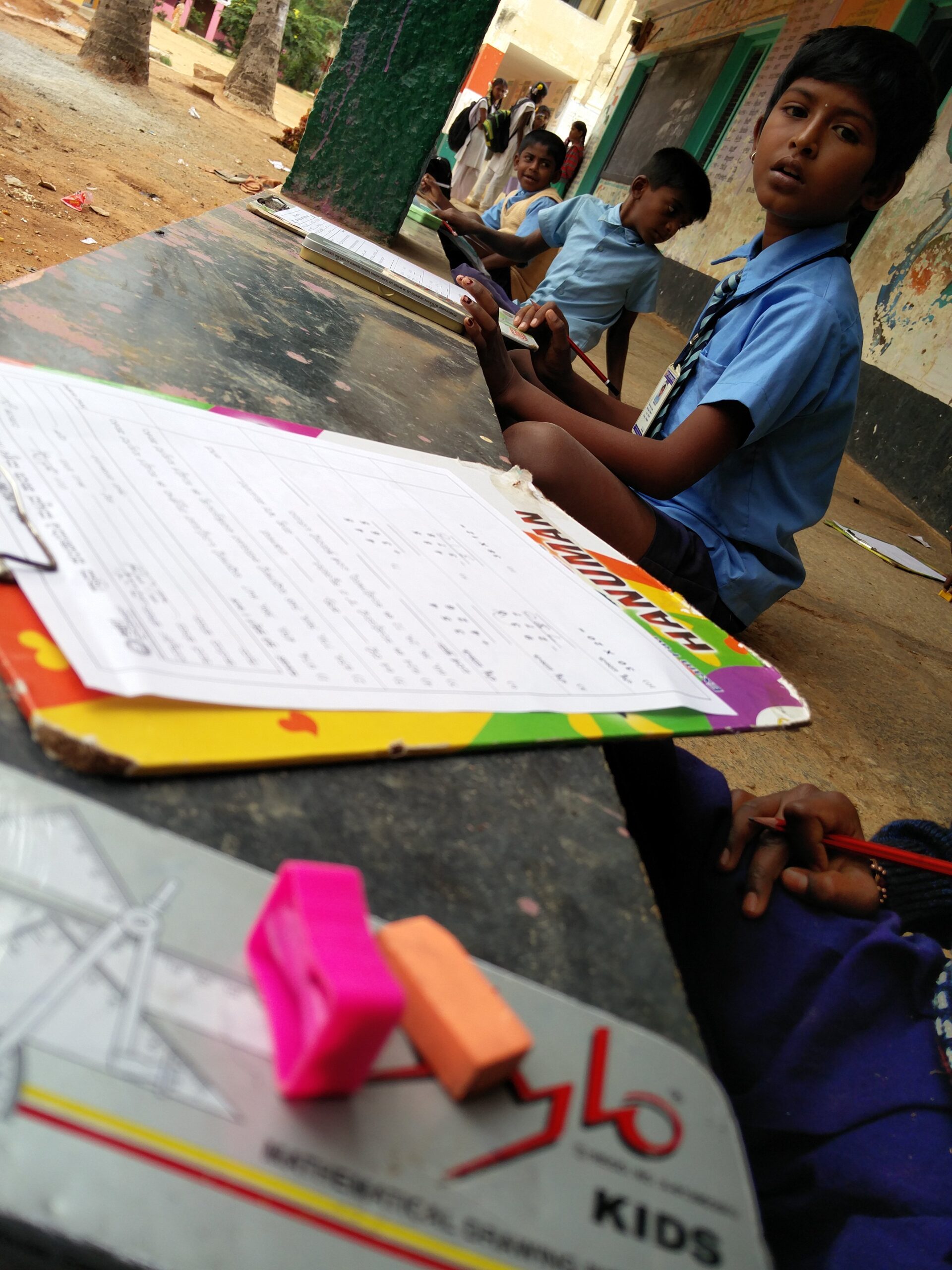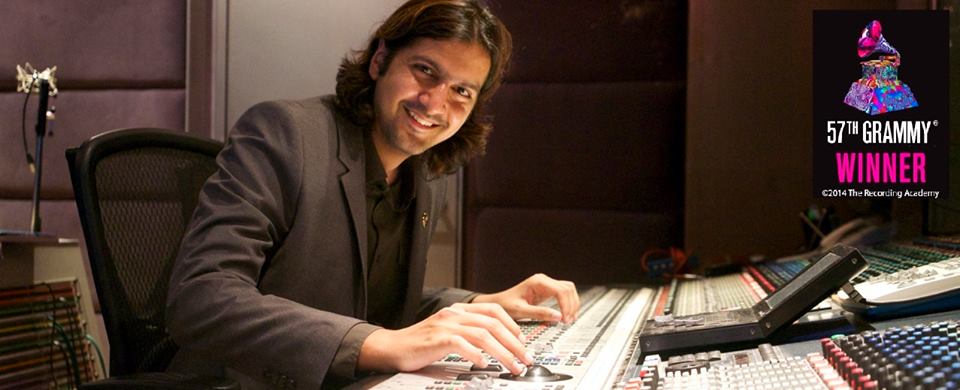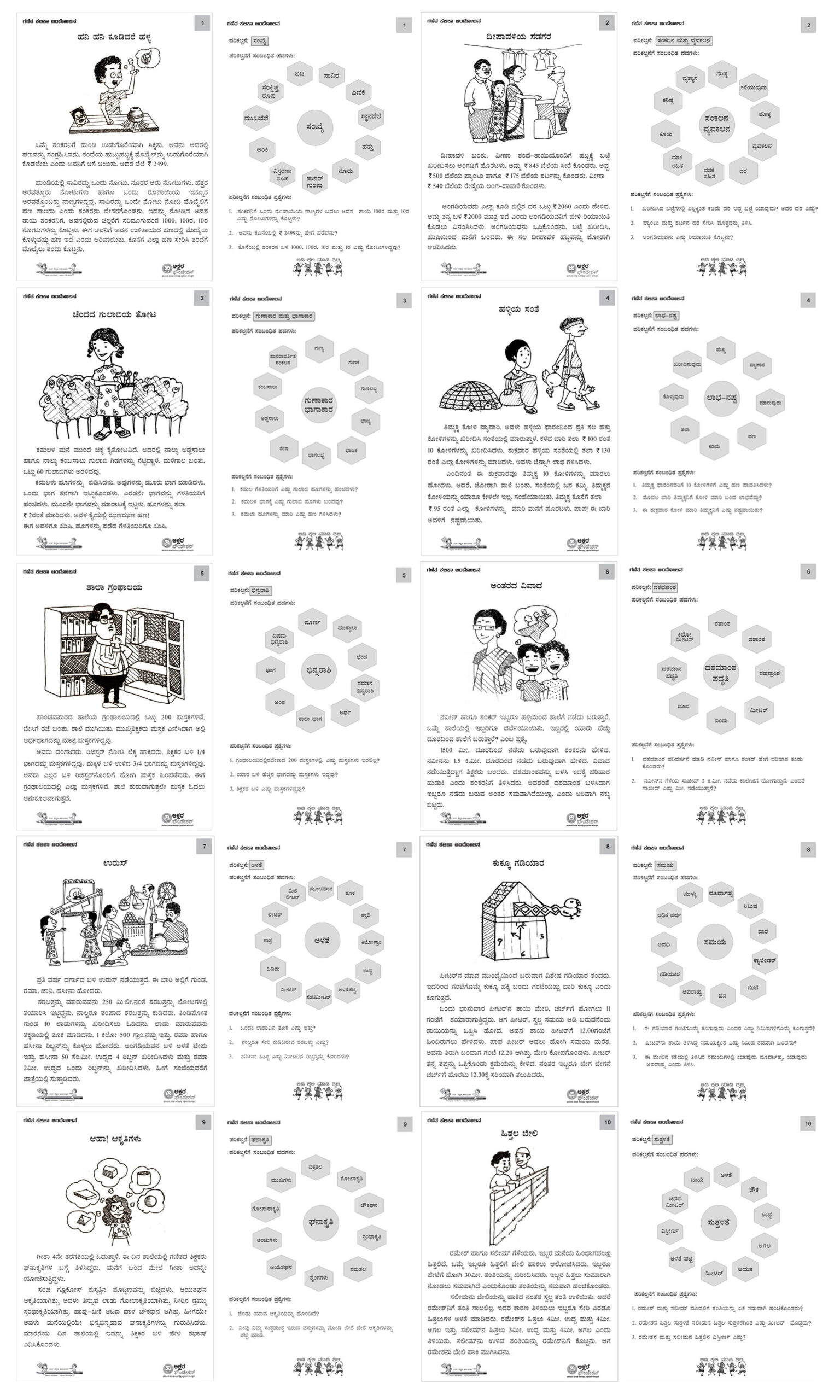Delivering quality education to every child in India is a huge challenge. The size and scale itself are daunting – about 1.5 million schools, 8.5 million teachers and nearly 250 million children. In 2001, the Indian government took a bold step and created the Sarva Shiksha Abhiyan (SSA) and this, over the years, built the infrastructure needed to house and teach 250 million children. By all accounts, it was a bold and effective move – prior to SSA less than 60% of the children were in school – today more than 95% are in school. While getting schools in place was done what was missing was quality schooling. Successive surveys since 2005, such as the Annual State of Education Report (ASER), show that learning outcomes of children are far from satisfactory – in fact, the results are quite depressing and what is further disconcerting is that despite knowing the state of education, there is nothing in surveys of latter years to show that the needle has moved significantly in the right direction.
Clearly, it is time for another bold SSA-creation-type moment. We need people and organizations that can change the current system of thinking and acting; we need them to pull all stakeholders together, strengthen ideas, make them more viable and scalable, and thus multiply impact. A survey of the landscape will quickly reveal that we are a country of remarkable pilot studies – there are several dozen, if not hundreds, organizations that are hugely talented and innovative – but somehow, there are no visible examples of organizations that have done work at scale and sustainably.
Which of course means that we need to understand clearly what scale and sustainability mean. The government school system is the one that gives us scale – if we have to make a difference in society then we have to learn how to work with the government which, in itself, is no mean feat. While it may seem painfully slow there is a process inside government and once this process is followed and your solution accepted then the impact can be made across very large numbers of learners. We are talking, in a mid-sized state like Karnataka, of nearly 45,000 schools and 10+ million children – that is scale.
I believe that scale without sustainability becomes meaningless. And sustainability goes way beyond financial sustainability – it means that your solution is accepted by and delivered effectively through the state system of teachers and educators. And this means, one should think in terms of exit strategies.
So how does one go about making scale and sustainability happen? The assumption is that your pedagogy and tools are innovative and very good. At Akshara Foundation, we have over the past dozen years, evolved a model for the delivery of primary school math teaching/learning through the government school system and we now are in a position to articulate what we believe is a workable model. Akshara’s Ganitha Kalika Andolana (GKA) looks at multiple stakeholders and tries to answer the question “what’s in it for me?” for each of the stakeholders.
First, the teachers. Before we started out, we tried to understand why teachers had trouble in delivering math instruction and found out that while there were textbooks, they had no tools to transact the textbook. In other words, teachers were asking for an effective kit that would help them teach math. And they are right! Math should always be taught using a constructivist approach using what is called the CRA method – from Concrete to Representational to Abstract. Our observations prior to GKA told us that teachers were relying on taking the child straight to the Abstract mode which mean that rote-learning came into play and that concept understanding and clarity were missing. Needless to say, Akshara created an innovative, scientifically designed toolkit which now is part of every government school in Karnataka and Odisha. The kit was supplemented by teacher training both in the face-to-face mode and now via 25 hours of digital AV modules that covers the entire curriculum. And all this was created so that the burden on the teacher was eliminated, and the teachers were able to appreciate that it (GKA) was good for them as well. It is therefore not surprising that every math period every day in these schools is a GKA period.
The GKA 1.0 Kit (for grades 1-5) was designed by Akshara’s resource team with inputs from the field. Recently, the Karnataka Education Department invited Akshara to develop GKA 2.0 kit (grades 6-8) and this has been completed – the difference here being that the kit was developed by government schoolteachers who worked along with Akshara’s resource people through a series of workshops spanning nearly four months. Hidden in this development is a message of sustainability – when a key stakeholder “owns” the solution the chances of it working well across the system get multiplied. See https://youtu.be/eRv9wj4B_z8
Every state has a large cadre of resource support personnel in the form of Cluster Resource Persons (CRPs or CRCCs); Block Education Officers (BEOs) and Block Resource Persons (BRPs), etc. They are expected to support the schools academically and for administratively as well. Part of their efforts include trying to understand how children are performing and whether programmes implemented through the state are working. To help them with this task with respect to GKA, we created a simple process of data collection with FOUR questions only. Each one of those questions was designed such that, based on the survey results, we (stakeholders) need to take action. As an example, we ask the question – were the GKA kits used during the math class? – and if we know that a significant portion of teachers do not use the kits then we need to understand why and remedy the situation. The Resource Support personnel observe and send this data to Akshara which then collates and shares results in a very short time (in fact, almost real-time). This ownership by the state resources also ensures long-term sustainability.
Community engagement is a big part of the GKA model. It is often said that it takes a village to educate a child. At Akshara we took this to heart. A huge cadre of Education Volunteers at the Gram Panchayat (GP) level were identified and nurtured and they manage multiple community-led events such as a GP-level Math contest (see https://youtu.be/ySyOsbWJGOI ). They also manage other tasks but all of them is done in a very focussed manner and without it being a burden on them. Typically, an Education Volunteer invests about 3-4 hours every month to support the school whose alumni they usually are. What is noteworthy here is that the Education Volunteers work without any compensation – as of this writing (January 2023) there are more than 50,000 such volunteers in Karnataka alone.
The GP level contest is a well-designed property – at Akshara we like to say that it is a contest for children AND a (con)test for all other stakeholders. Every stakeholder gets valuable inputs – teachers get to know the weakest areas of their wards’ performance, parents and community members get to see how their wards are faring, elected officials like Gram Panchayat members and School Development & Monitoring Committee (SDMC) Members all get to see how the children of their geography are performing. All of this is done in a highly transparent manner and results are shared within three hours with all. This contest has been a huge success – attendance is usually 92+% and this is financially sponsored by the local communities – another way of ensuring long-term sustainability.
What is the role of government in all this? Without significant government buy-in, none of this would have been possible – GKA would remain another interesting pilot. But the states where Akshara has scaled – Karnataka and Odisha – both have recognized the importance of this model and have invested in the procurement of kits in each school (through their formal tendering processes) and for teacher training costs, etc. This is a sign of ownership and commitment to the model.
Of course, over the years, Akshara has stayed current and leveraged technology in multiple ways. We invested in an Android app called Building Blocks that is available in bundled form on Google PlayStore and in an unbundled form on the Ministry of Education’s Diksha Platform. This app is a collection of interactive games and is linked to the curriculum and it was but natural for us to link textbooks to these games using QR codes at the end of chapters in the textbooks – something called energized textbooks. And more innovative uses of technology is in the works.
True scale and sustainability can only be achieved when the community starts demanding quality education and starts participating in its delivery. Only then will the supply-side stakeholders start addressing this demand. At Akshara we believe that for effective transformative change to happen we need a holistic model that makes sure that children, teachers, educators, community members, elected representatives, NGOs, and the government all see value. And all the bits have to play together concurrently for impact. This transformation will not happen in 2-3 years – something pilots tend to do to show that they work. Since the entire system has to be “educated” we reckon this would require a commitment for a decade or more so that we are able to infuse the system with the ability to “learn, unlearn and relearn”. We constantly need to monitor the progress of every single element in the model and not just learning outcomes of children because without all of that playing together you will not hear or see the outcomes.
Ashok Kamath
Chairman & Managing Trustee, Akshara Foundation



















